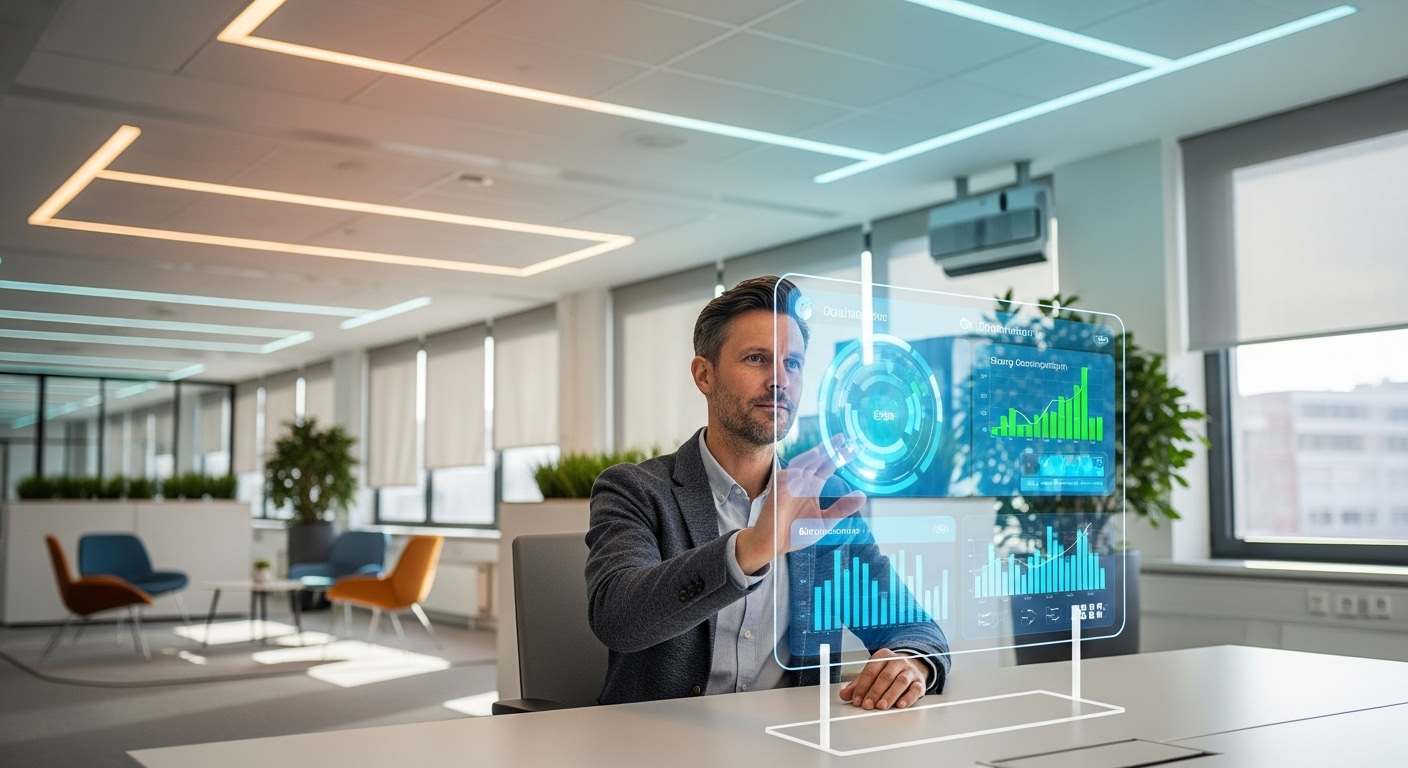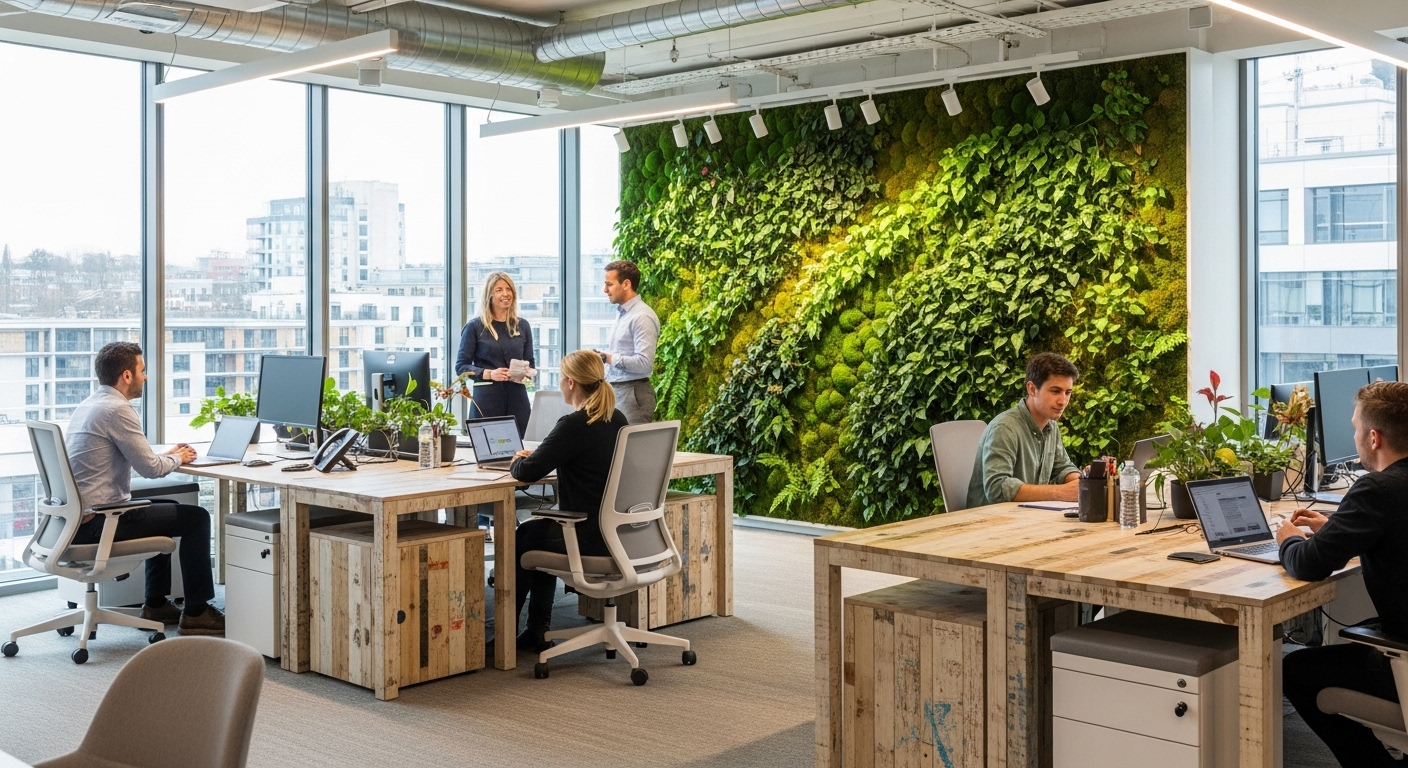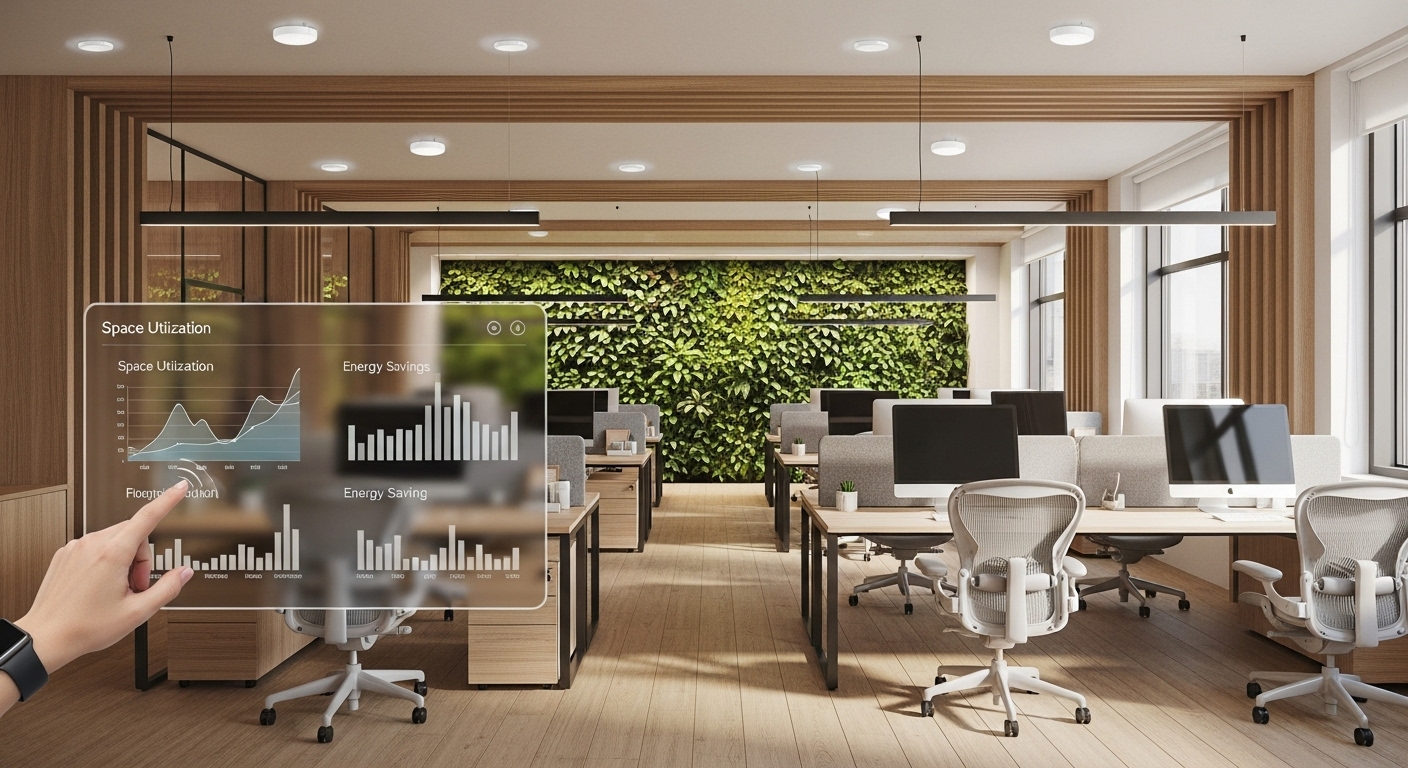The modern workplace is saturated with technology, yet it often feels more fragmented than futuristic. A smart thermostat operates independently from the room booking system, while security access is a separate silo from employee analytics. This ad-hoc adoption of smart devices creates a disjointed experience that fails to deliver on the true promise of an intelligent office. The next evolution in the future of work is not about adding more gadgets; it’s about connecting them. It’s about weaving a cohesive ‘digital fabric’—a unified ecosystem where technology works in concert to create a seamless, responsive, and human-centric environment. This integrated approach moves beyond isolated conveniences to unlock transformative gains in operational efficiency, employee well-being, and overall productivity. This guide will explore the core pillars of this unified system, from the data it generates to the strategy required for a successful, human-first implementation, providing a roadmap to building a truly intelligent workplace.
Defining the digital fabric: Beyond standalone gadgets
The concept of a ‘digital fabric’ represents a fundamental shift from a collection of smart devices to a single, intelligent operating system for your physical workspace. Imagine an office that anticipates needs rather than just reacting to commands. This is the core difference between a space with smart gadgets and a truly smart office. The former is characterized by disparate apps and platforms—one for lighting, another for climate, and a third for booking a desk. A unified ecosystem, however, is built on a foundation of interoperability. The core components include a network of Internet of Things (IoT) sensors gathering real-time data on everything from occupancy and air quality to energy consumption. This data flows into a central platform or ‘brain’ that analyzes it to make intelligent decisions. The final layer consists of user-facing applications, often a single, intuitive mobile app, that allows employees to interact with their environment in a personalized way. This integrated model means the HVAC system can automatically adjust based on how many people are in a meeting room (as detected by occupancy sensors), the lighting can sync with employees’ circadian rhythms throughout the day, and facilities managers can receive predictive maintenance alerts before a system fails. The goal is to create an ambient, frictionless experience where the technology fades into the background, empowering employees and optimizing building performance without requiring constant manual intervention.
The core pillars of a unified smart office
A truly unified smart office is built upon several interconnected technological pillars, each contributing to a more efficient and pleasant workplace. The first is intelligent environment control. This goes far beyond a simple smart thermostat. It involves dynamic HVAC systems that use occupancy data to heat or cool specific zones, saving immense energy costs. It also includes smart lighting systems that adjust brightness based on natural light levels and can even be tuned to support human circadian rhythms, boosting alertness during the day and promoting better sleep at night. The second pillar is dynamic space management. In a hybrid work model, fixed desks are inefficient. Smart booking systems for desks and meeting rooms, powered by real-time data, allow employees to find and reserve spaces effortlessly. The analytics derived from these systems provide invaluable insights into how the office is actually being used, enabling companies to optimize their real estate footprint. A third crucial pillar is seamless access and security. Traditional keycards are being replaced by mobile-based, keyless entry systems. This can be integrated with visitor management software that automates guest check-in and notifications, creating a professional and frictionless experience from the moment someone arrives. Finally, there are the tools that directly support employee well-being and productivity. Air quality sensors that monitor CO2, humidity, and VOCs can trigger ventilation systems to maintain a healthy environment. Personalized settings can allow an employee’s profile to follow them, automatically adjusting their reserved desk to their preferred height and lighting level, creating a workspace that is truly their own.
The data dividend: Turning raw information into actionable insights
The most profound benefit of a unified smart office isn’t just the automation; it’s the wealth of data it produces. Every interaction and environmental change generates a data point, and when aggregated, this information provides a powerful, real-time understanding of the workplace. This is the ‘data dividend’—the ability to make strategic, evidence-based decisions that were previously based on guesswork. For instance, occupancy sensors and desk booking software don’t just help employees find a spot; they provide facilities and real estate teams with detailed utilization heatmaps. This data can reveal that a certain section of the office is consistently underused, prompting a redesign to create a more desirable collaboration hub. It can also provide the concrete evidence needed to justify reducing a company’s real estate portfolio, leading to massive operational savings. Similarly, granular energy consumption data from smart plugs and lighting systems allows for the identification of wastage and the implementation of targeted energy-saving policies that support corporate sustainability goals. Even data on meeting room usage can be transformative. Analytics might show that large boardrooms are frequently booked by just two or three people, indicating a need for more small huddle spaces. By transforming raw data into these actionable insights, the smart office becomes a strategic asset that continuously adapts and improves over time.
Integrating people, not just platforms: A human-centric approach
Technology, no matter how advanced, is only effective if people embrace it. The critical mistake many organizations make is focusing solely on the technical implementation while neglecting the human element. A human-centric approach is paramount to weaving a successful digital fabric. This begins with the user experience (UX). If employees need to navigate a clunky, unintuitive app to book a desk or adjust the temperature, they will quickly revert to old habits. The interface for interacting with the smart office must be seamless, intuitive, and consolidated—ideally into a single application that feels empowering, not burdensome. Beyond the interface, a thoughtful change management strategy is essential. This involves clear communication about the benefits of the new technology—framing it not as a surveillance tool, but as a system designed to improve their comfort, well-being, and productivity. Training sessions and accessible support channels are also vital. The ultimate goal is personalization. A truly smart system recognizes individuals and adapts to their preferences. When an employee books a desk, the system should automatically adjust it to their pre-set ergonomic height, set the lighting to their preferred level, and even log them into the local display. This level of personalization is what drives adoption and transforms the office from a generic space into a personal productivity hub, ensuring the significant investment in technology delivers an equally significant return in employee satisfaction and performance.
Navigating the security and privacy landscape
As offices become more connected, they also become more vulnerable. The proliferation of IoT devices—from sensors to smart lights—creates thousands of new potential entry points for cyber threats. Therefore, a robust security strategy is not an afterthought but a foundational requirement for any smart office initiative. This strategy must be multi-layered, starting with network segmentation to isolate IoT devices from critical business systems, ensuring that a compromised smart thermostat cannot provide a backdoor into the company’s financial data. Rigorous device lifecycle management is also key, ensuring that every device is properly configured, regularly patched with security updates, and securely decommissioned at its end of life. Parallel to security is the critical issue of employee privacy. The same sensors that measure occupancy can be perceived as tools for surveillance. To build trust, organizations must be transparent about what data is being collected and how it is being used. A clear data governance policy should be established, emphasizing the anonymization of personal data. The focus should always be on analyzing aggregate trends—like how many people use a space—rather than tracking the movements of specific individuals. Compliance with data protection regulations such as GDPR is non-negotiable. By proactively addressing security and privacy, companies can build a smart office that is not only intelligent and efficient but also trusted by the people who use it every day.
Building your roadmap: A phased implementation strategy
Implementing a unified smart office ecosystem is a significant undertaking that should not be treated as a single, monolithic project. A phased, strategic approach is essential for managing complexity, mitigating risk, and ensuring success. The first phase is a comprehensive audit. This involves evaluating your current infrastructure, identifying the most significant pain points for both employees and facility managers, and defining clear objectives. Are you trying to reduce energy costs, optimize your real estate, or improve employee satisfaction? Clear goals will guide your technology choices. The second phase should be a pilot program. Instead of a full-scale rollout, select a specific floor, department, or building to serve as a testing ground. This allows you to deploy the technology in a controlled environment, gather user feedback, identify technical glitches, and measure the ROI against your initial objectives. The learnings from this pilot are invaluable for refining the strategy before a wider implementation. When selecting technology, prioritize platforms built on open standards and APIs. This prevents vendor lock-in and ensures that the different components of your ecosystem—lighting, HVAC, security—can communicate with each other. A proprietary, closed system might seem simpler initially but will create integration headaches down the line. Finally, the third phase is the gradual, informed scale-up, expanding the system across the organization based on the proven success of the pilot. This methodical roadmap transforms a daunting project into a manageable, value-driven journey.
In conclusion, the evolution of the workplace hinges on moving beyond isolated smart devices to weave a truly integrated ‘digital fabric’. This unified ecosystem, where environmental controls, space management, and employee-facing tools communicate and cooperate, represents the next frontier in operational efficiency and human-centric design. The journey requires more than just a technological investment; it demands a strategic vision centered on the user experience, robust security and privacy protocols, and a methodical implementation plan. By focusing on the data dividend, companies can unlock powerful insights to optimize their physical assets and create healthier, more productive environments. Ultimately, the intelligent office is not defined by the number of sensors it contains, but by its ability to seamlessly adapt to the needs of its occupants. For organizations looking to attract top talent, foster innovation, and build a resilient operational model, creating this responsive and cohesive workplace is no longer a futuristic ideal but a present-day imperative.





